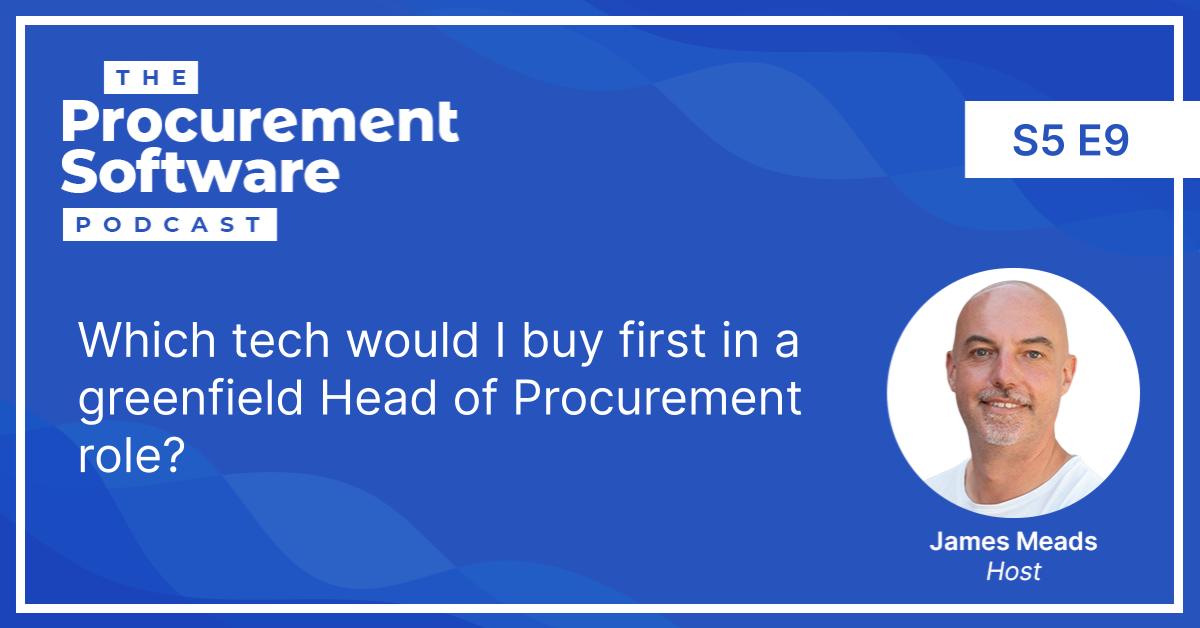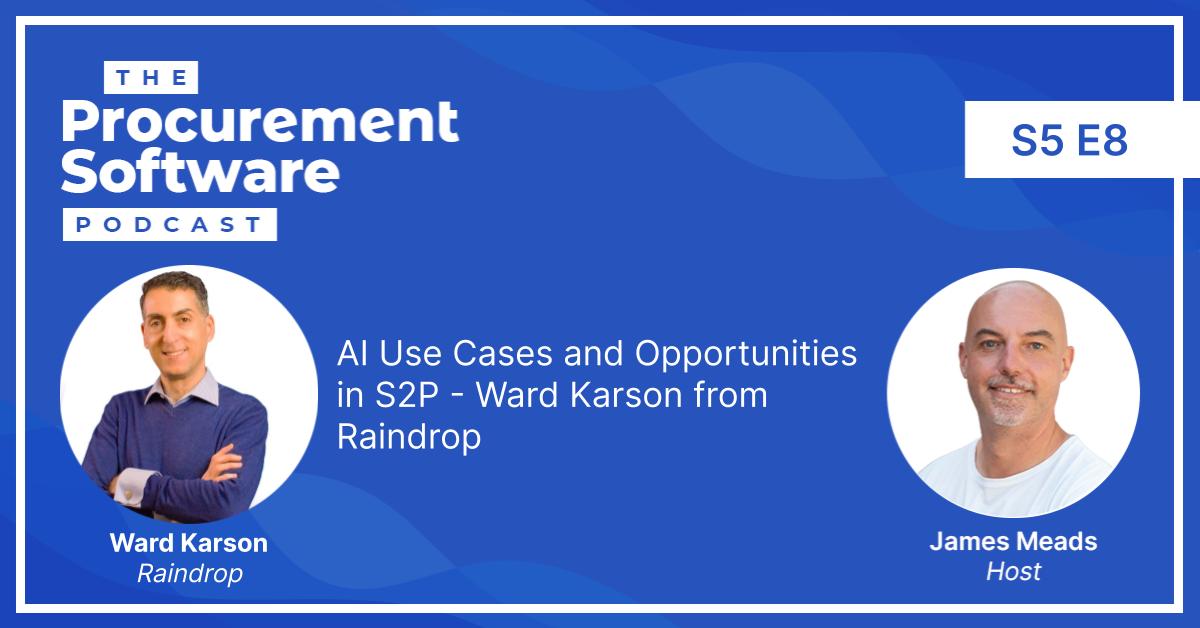Welcome back to The Procuretech Podcast!
We’re continuing with our mini series where we ask influencers and industry experts for their thoughts and nuggets of advice on everything that’s happening in the digital procurement world.
Today we’re talking about E-Auctions and E-Sourcing. Depending on how the technology’s been deployed, some people might be sceptical about this topic.
But our guest today literally wrote the book on E-Sourcing, and he’s here to explain the upsides. Let’s welcome to the podcast Jacob Gorm Larson, of Moneyball CPH.
Success with E-Auctions – Jacob Gorm Larsen from Moneyball CPH
We’re going to talk about current trends in E-sourcing from a platform agnostic viewpoint. We might all have our favourite – or least favourite – platforms, but we won’t be going into specifics here.
Instead we’ll be sharing all the tips, tactics, and observations Jacob has learned during his long career in this space.
We began our chat with a brief rundown of Jacob’s history…
Jacob Gorm Larson – A career in E-sourcing
Jacob’s been in the procurement space for around 20 years.
He spent most of that time with Maersk, the global shipping company. Maersk used to be a conglomerate, so they would operate in oil, gas, offshore logistics and a couple of other industries.
Jacob introduced E-sourcing across all these different industries, and in doing so, learned that it’s not an industry or category specific thing. It can be applied in any industry with the right knowledge.
But E-sourcing can be a divisive topic within procurement, because people don’t fully understand the technology.
That’s why Jacob wrote his book, so he could share the kind of knowledge he wished he had access to at the start of his journey. The book sparked some interest, and a year later Jacob found himself moving to an advisory role.
He now supports companies in their procurement transformation process.
How did the rise of technology impact Jacob’s career at Maersk, and how did this improve results at auction?
Jacob says he had a fantastic ride with E-sourcing.
He came into his role at Maersk in 2007/8, so there was a huge degree of uncertainty, being right on the brink of the financial crisis. This had a lot of companies in dire straits and facing a lot of challenges.
There was a desperate need for securing cost savings. In many ways there are a lot of similarities to the situation right now, with record level inflation across the world and a potential recession coming in.
It could well be that within the next six months, we see another huge drive for technologies that can help companies take out costs, and bring down the overall cost base.
And that was exactly what Jacob used E-sourcing for back then, too. It was there when companies needed it the most. And so Jacob got support from all the way up the company to introduce it, to push it. promote it and drive it quite hard across all areas of the company.
He realised during that time that E-sourcing is in the DNA of procurement as a function: There’s a constant need to own the cost agenda. And one very efficient way of doing that is to apply E-sourcing and E-auctions,
He also added a lot of sourcing optimization capabilities later on, creating a full toolbox to digitally tackle the market and ensure they were always cost competitive within Maerks’s various markets.
The five pillars of successful E-sourcing
Jacob’s book breaks things down into five pillars required for a successful E-sourcing strategy. These are:
- Definition
- Strategy
- Bidder engagement
- Adoption and change management
- The future of E-auctions
A lot of people think E-auctions are the same as reverse auctions. But they’re not the same thing.
Jacob defines an E-auction as any auction in an online, market-driven negotiation, based on total value with commitment. That definition is absolutely key for understanding the potential of auctions if you drive it strategically.
First of all, it has to be market driven. Of course you need multiple suppliers to participate in your negotiation. But the total value piece is another essential part of the definition. Where a lot of companies fail with auctions is that they don’t get the total value part included in their approach.
Not all negotiations – actually very few – are purely price based. That’s probably one of the top myths about E-auctions, that they’re just about price.
If you want a real negotiation, you need to be able to include other parameters. And if you do it right, you can include any parameter in your auctions.
The last, and maybe the most important, part of the definition is commitment.
If you don’t commit or award based on the auction result, it’s not a real negotiation. It’s a market benchmark exercise.
And that’s where you get a lot of frustration from suppliers: “Why are we doing this just to give you a benchmark?”. That’s not sustainable. You have to treat suppliers with respect and you have to be consistent.
Commitment is an absolutely essential part of running a sustainable auction program. If you do that, you’ll also get the respect and the acceptance from your supply base required to participate in these events.
AI, machine learning and suggested pricing
Pricing has always been a tricky thing to evaluate in-platform. Some platforms are now implementing AI and machine learning to enable suggested pricing.
This is an absolute game-changer when it comes to facilitating bidder engagement: They’ll be more engaged, knowing that they’re not going to get beaten up on price. And in return, that helps internal shareholders become more engaged too.
Interestingly, suggested pricing isn’t a new thing. Glen Meakem, who founded FreeMarkets (the first E-auction platform) 25 years ago actually submitted a patent for this very thing. The problem was that very few users were actually using it.
It comes down to a problem of understanding, UI, and training.
You don’t become a Formula One driver, by putting yourself in a Formula One car. You need training to get the most out of these tools. And in turn, the tools need to be designed with users in mind.
Another huge barrier to adoption here is change management, mindset, and the lack of buy-in from the procurement community. There is still a lot of convincing to do.
E-auctions and the future
Procurement professionals now, especially with a recession around the corner, are going to have to do more with less resources. Giving them an electronic sourcing platform that’s perceived as something that creates more work for them is not going to bring them on board.
We need tools that are more easily usable. And, looking towards the future, maybe companies should consider solutions for autonomous negotiations, or using machine learning or scraping for supplier scouting.
That’s the fantastic thing about what has been going on here over the last couple of years. If you look 10 years back, the only digital option you truly had for addressing your sourcing needs was out of the boxE-sourcing platforms. But today we have a range of different solutions.
You can have a customer who is doing the predictive part of procurement. So why even negotiate if we can predict the price and tuse that as an anchor towards suppliers? Now you have a Paxum who’s introducing chatbot negotiators.
Keelvar do sourcing optimization, but they also do the sourcing bots – for example, for ocean freight.
So for the first time in history, the procurement organisations have a full digital toolbox available for how to address this spend in times of economic uncertainty.
Jacob thinks technology will be a differentiator here: The organisations who manage to truly embrace all of these opportunities, versus the laggards that are still just getting started on digital sourcing.
But it’s not just technology. Jacob believes that change is actually 90% people driven. It’s not about the tech, so much as in the heads of the people who need to apply it.
When it comes to the future of talent, he believes that we’ll focus more on how data and tech-savvy people are.
He thinks the days will soon be gone, where you have the old school negotiator who has done this for 30 years, who’ll swing suppliers around and get a good deal.
In terms of leadership as well, the technocrats and the policemen will soon become a thing of the past. We need to be more focused on an entrepreneurial mindset and agility in terms of getting things done, rather than following a process.
Wrapping Up
Thanks to Jacob Gorm Larsen for a fascinating dive into E-sourcing and E-auctions, there.
If you’d like to get in touch, or would like a copy of Jacob’s book, A Practical Guide to E-auctions for Procurement, you’ll find all the links you need below.
And in the meantime, if you want to explore what’s out there in the E-sourcing space, we’ve got 26 solutions listed on Procurementsoftware.site. So head on over there and use the filters to find what you’re looking for.
Thanks for listening, and we’ll see you next time!
Stay in touch
- Check out Moneyball CPH
- Connect with Jacob on LinkedIn
- Read Jacob’s book: A Practical Guide to E-auctions for Procurement
- Sign up for the Procurement Software Newsletter
- Book an Intro Call and let’s talk all things Digital Procurement!
- Connect with James on LinkedIn
- Follow Procurement Software’s LinkedIn Page


